So I have written a query to get the cumulative sum of children but I think partition sum has error as its totalling for the parent that is not part of the children.
My fiddle is http://sqlfiddle.com/#!15/88828/1 I have dont a running total but thats wrong. I want the siblings total to a child and child total back to its parent.So basically cumulative total of a child up the tree.
expected output
parent_child_tree id name dimensionvalueid level order_sequence volume cummulative_total
A1 1 A1 (null) 0 1 20 840
-----A1:1 2 A1:1 1 1 1_1 (null) 820
----------A1:1:1 3 A1:1:1 2 2 1_1_2 20 820
-----------A1:1:1:1 4 A1:1:1:1 3 3 1_1_2_3 300 800
-----------A1:1:1:2 5 A1:1:1:2. 3 3 1_1_2_3 500 500
B1 6 B1 (null) 0 6 200 300
-----B1:2 8 B1:2 6 1 6_6 (null) null
-----B1:1 7 B1:1 6 1 6_6 (null) 100
----------B1:2:1 9 B1:2:1 8 2 6_6_8 100 100
